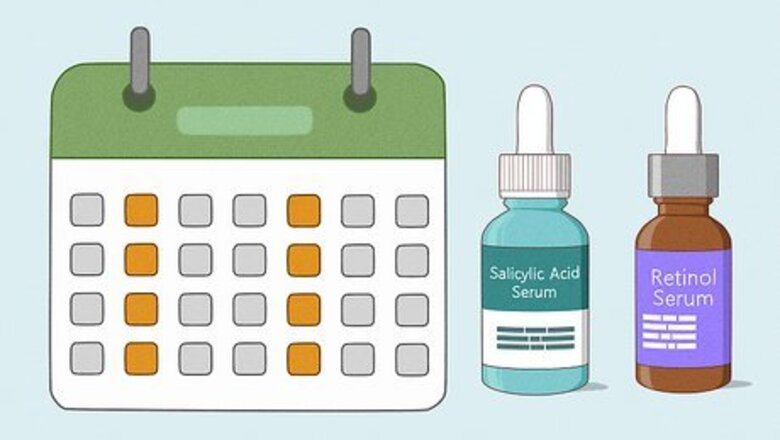
views
- To use both serums in your routine, apply salicylic acid in the morning and retinol at night. Do not apply them on top of each other or at the same time.
- Salicylic acid exfoliates your skin to unclog your pores, remove excess oil, and treat acne.
- Retinol increases cell turnover and collagen production to reduce the appearance of wrinkles, clear away pigmentation spots, and treat acne.
Adding Salicylic Acid and Retinol to Your Routine
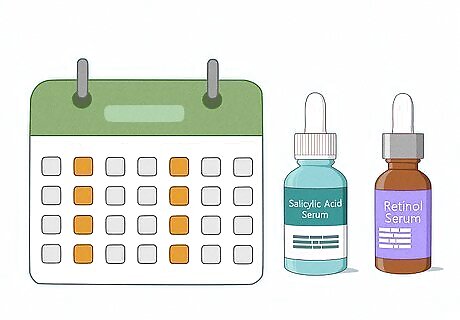
Use salicylic acid and retinol twice a week to start and build up to daily use. If one or both of these products are new to your skincare routine, start by using salicylic acid and retinol only once or twice a week. This gets your skin used to these serums and helps to mitigate any dryness or irritation. Then, slowly build up to using your serums every other day. Before applying either serum to your face, do a patch test. Just dab on a small amount of each serum to the inside of your elbow and watch for any reactions like redness, itchiness, or swelling. It’s normal to experience slight dryness, redness, or irritation when starting to use either product. These symptoms typically go away as your skin gets acclimated to them. Skin purging is a common side effect when using either salicylic acid or retinol for the first time. You might have more acne breakouts for a couple weeks to a month before your skin gets better.
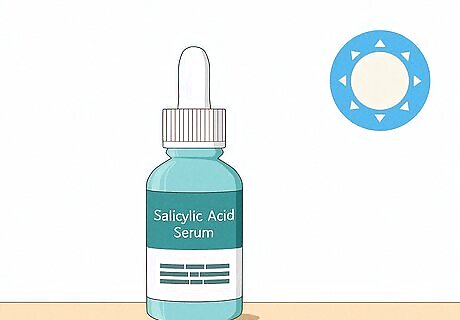
Apply salicylic acid in the morning. Using salicylic acid in the morning is a great way to give your skin a boost and reduce excess oil from forming throughout the day. Just wash your face and let it dry before applying your cream, gel, or serum to any problem areas on your face. Then, apply your moisturizer and SPF and you’re ready to head out the door. To prevent any drying and irritation, most doctors recommend applying salicylic acid only to the areas you want to treat, rather than all over your face. Opt for a salicylic face wash if you don’t want to use a gel, cream, or serum. Like with a serum or gel, don’t pair it with retinol. Use the salicylic acid cleanser in the morning and wash your face with a gentle cleanser in the evening. If you don’t want to apply salicylic acid in the morning, use it on one night and retinol on the next, alternating between them. If you find that your skin gets sensitive from using salicylic acid and retinol every other night, give yourself a rest day on the 3rd day where you use neither serum.
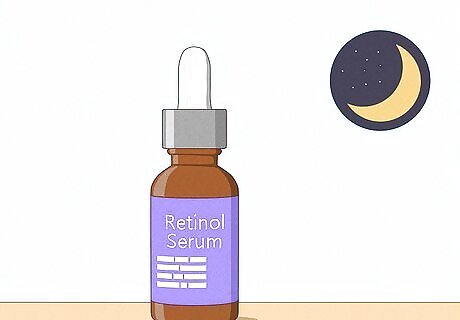
Use retinol at night. Most dermatologists recommend applying retinol at night. Retinol makes your skin more sensitive to the sun, which can increase your risk for sunburn or sun damage. At night, cleanse your face with a mild face wash. Pat your face completely dry then apply a pea-sized amount of your retinol. Wait 20 minutes to allow the retinol to soak into your skin, then apply your moisturizer.
What is salicylic acid?
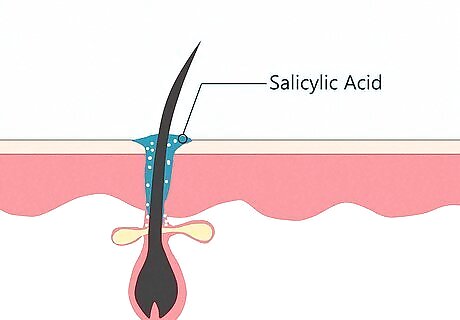
Salicylic acid is a type of beta hydroxy acid that exfoliates skin. This product is considered such a holy grail among dermatologists because it gets deep into the layers of your skin. Once it’s on your skin, it clears away clogged pores to heal active acne spots and prevent new pimples from forming. You’ll find most salicylic acid serums, creams, gels, and cleansers over-the-counter at your local pharmacy. The concentration of salicylic acid in OTC products ranges from 0.05% to 5%. Salicylic acid products with concentrations over 5% can only be prescribed by your doctor.
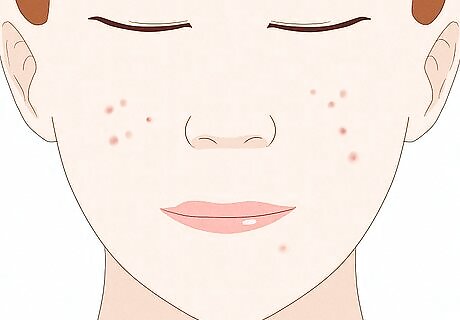
Salicylic acid treats acne, reduces redness, and decreases oil production. If you’ve got oily, acne-prone skin, definitely give salicylic acid a shot. It penetrates deep into your skin to unclog dead skin cells and excess oil in your pores. Its exfoliating properties reduce the redness and swelling of acne to also leave your skin smoother and brighter. Higher concentrations of salicylic acid tend to give you more noticeable results faster. Prescription salicylic acid is generally only used when you aren’t seeing results from regular, over-the-counter products.
What is retinol?
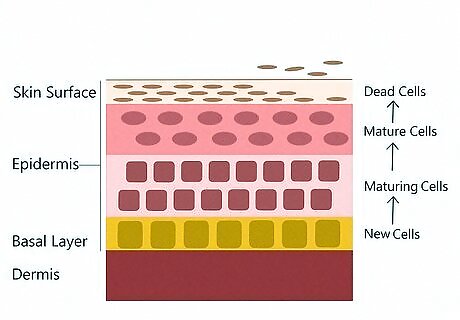
Retinol is a form of Vitamin A that promotes faster cell turnover. Your skin naturally replaces old skin cells with new, fresh ones. When you apply retinol, the cycling process happens faster and more new cells are produced. This in turn increases your skin’s collagen production, which is responsible for keeping your skin plump, elastic, and smooth. Over-the-counter retinols are typically found in concentrations ranging from 0.05% to 1% at the highest. There are a lot of over-the-counter retinols, so it can be overwhelming to choose one. Look for reputable brands and select a product that has retinol as an active ingredient. Because retinol can be pretty drying and irritating, start with a product that has a low concentration. Retinoids are a stronger form of retinol that are only available in prescription products like tretinoin and tazarotene. They have a higher concentration of active ingredients than retinols. Most prescription retinoids come in concentrations between 0.05% to 0.1%.

Retinol reduces fine lines, acne scars, and unclogs pores. One of the reasons that retinol is such a juggernaut in the skincare business is because it can reduce the look of wrinkles and fine lines. Its ability to stimulate collagen production adds fullness and firmness back to your face. Retinol also encourages new skin cells to form, which reduces the look of acne scars, sun spots, and other areas of pigmentation. It’s also a great exfoliant that clears your pores to treat and prevent acne. Retinol is also great for smoothing skin texture and evening your skin tone. This gives your complexion a healthier, brighter appearance.



















Comments
0 comment